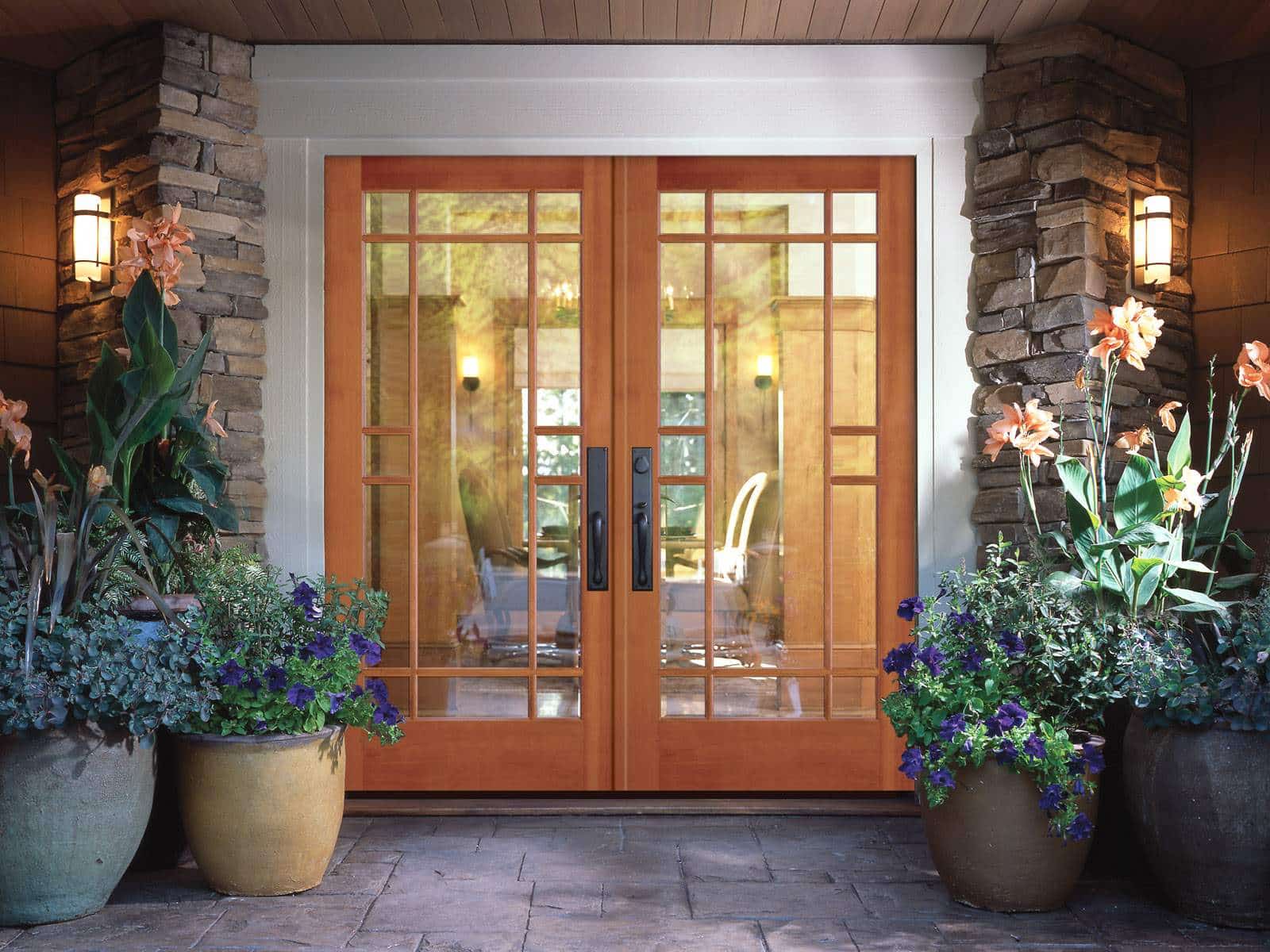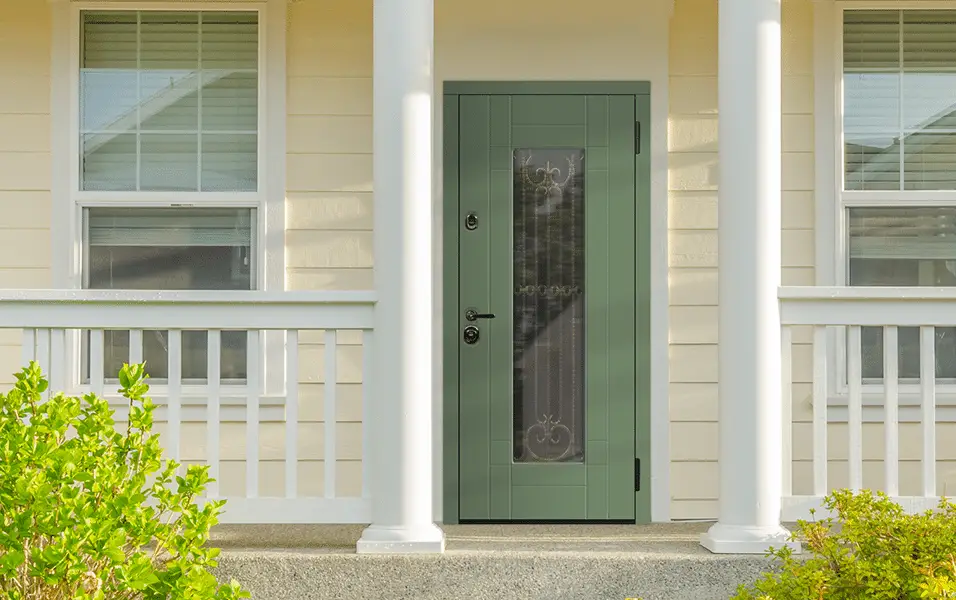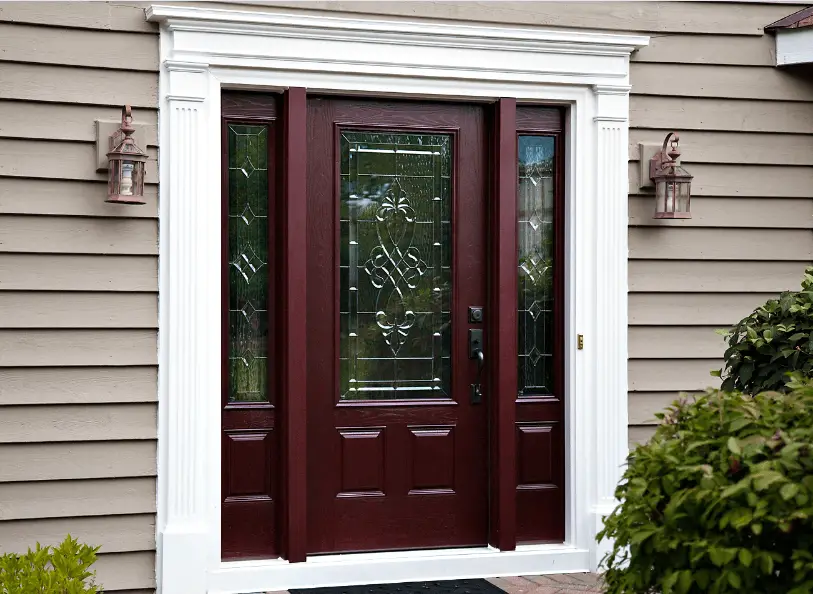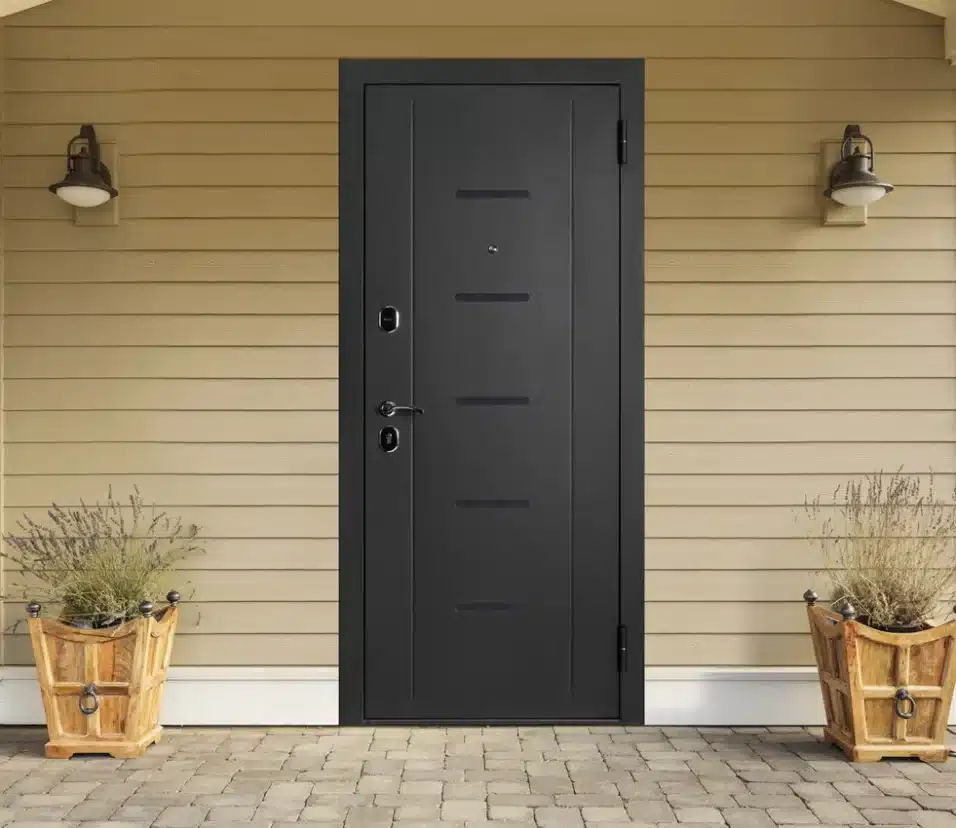How To Seal An Exterior Door Frame
Introduction
How To Seal An Exterior Door Frame: Sealing an outside door frame is an important home maintenance task that protects against weather, drafts, and vermin. To create a safe, energy-efficient, and comfortable living area, an outside door frame must be carefully crafted. Sealing an outside door frame combines practicality and strategy.
In this exploration, we delve into the art and science of effectively sealing an exterior door frame. From understanding the materials required to mastering the application techniques, the journey encompasses the synergy of both skill and precision. Not merely confined to the physical act of sealing, this endeavor unveils the insights and knowledge necessary to maintain a harmonious equilibrium between the outside world and the sanctum within. The delicate ballet of preparation, sealant selection, application procedures, and finishing touches protects against nature and improves home life.
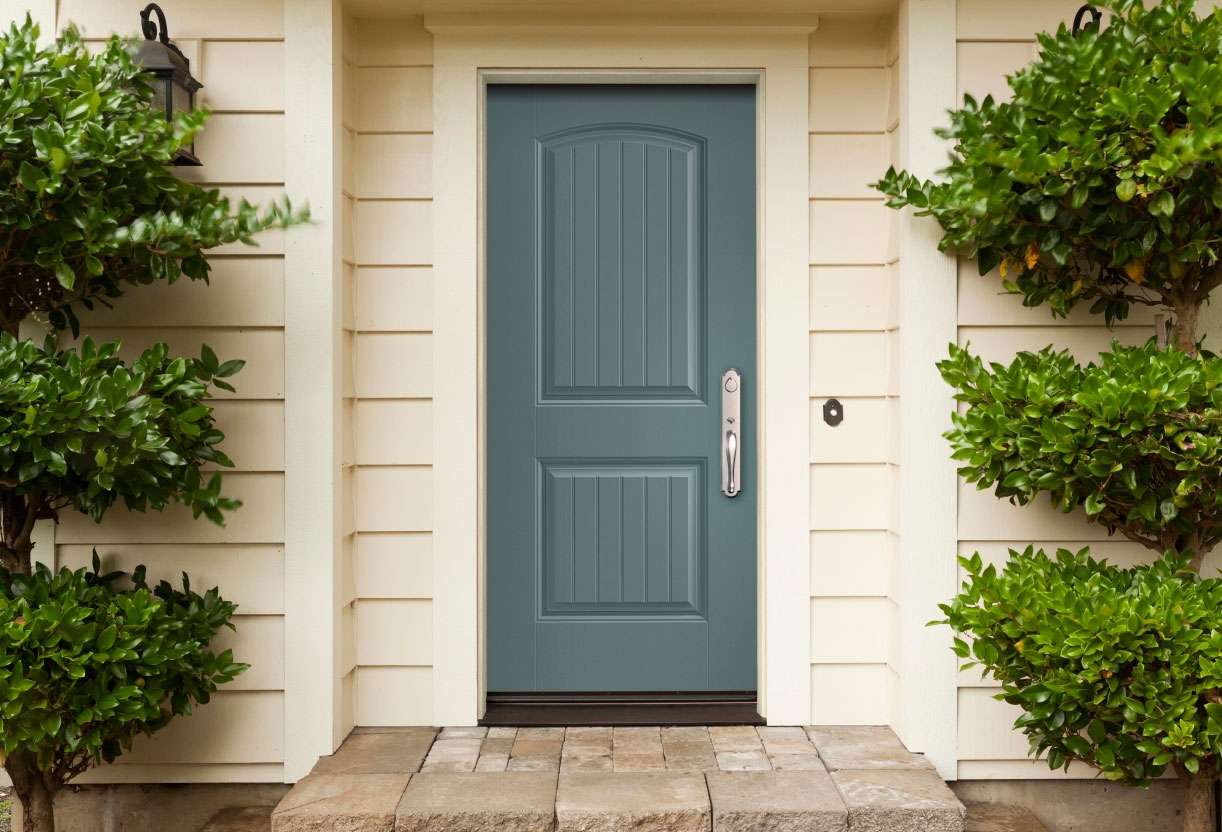
What is the best sealant for the exterior door frame?
For sealing around the exterior of a door or anywhere that could be exposed to water and harsh weather, choose a GE-branded 100% silicone sealant, like GE Supreme Silicone Window & Door Sealant. This sealant is 100% weatherproof, permanently flexible, and won’t crack or shrink with temperature changes. When it comes to selecting the best sealant for an exterior door frame, durability, weather resistance, and ease of application are key considerations.
Polyurethane sealants offer excellent adhesion to various surfaces, including wood, metal, and masonry, making them suitable for sealing door frames exposed to diverse weather elements. They remain flexible even in extreme temperatures, preventing cracking and ensuring a reliable seal over time. Additionally, polyurethane sealants are often paintable, allowing you to match the sealant color to your door frame.
Silicone-based sealants are known for their water resistance and flexibility, making them a solid choice for outdoor applications. They form a strong seal against moisture and can withstand UV exposure without deteriorating. Silicone sealants also maintain their elasticity, accommodating the natural movement of the door frame due to temperature changes.
Before applying any sealant, ensure the door frame is clean, dry, and free of old sealant residue. Always follow the manufacturer’s instructions for proper application and curing times.
How do you seal under an exterior door threshold?
Squirt expanding foam sealant under the threshold to hold it in place and plug any air gaps. Immediately put the toekick up under the flashing and tight against the underside of the threshold, and screw it to the subsill. Run a bead of sealant between the threshold and each door stop.
Sealing under an exterior door threshold is a critical step in preventing drafts, moisture, and pests from entering your home.
Here’s a step-by-step guide on how to effectively seal under an exterior door threshold:
1. Clean and Prepare: Start by cleaning the area beneath the threshold. Remove dirt, debris, and any old sealant to ensure proper adhesion.
2. Choose the Sealant: Opt for a high-quality exterior-grade sealant that is waterproof and weather-resistant.
3. Apply Masking Tape: Place masking tape along the edges of the threshold to create clean lines and avoid smudging sealant on the surrounding surfaces.
4. Apply Sealant: Use a caulking gun to apply a generous bead of sealant along the joint where the threshold meets the floor. Make sure the sealant fills any gaps or cracks.
5. Smooth the Sealant: Use a caulk smoothing tool or your finger (wearing a disposable glove) to smooth the sealant and create a neat finish.
6. Remove Excess: Carefully remove the masking tape before the sealant dries to achieve a clean edge.
7. Allow to Cure: Let the sealant cure according to the manufacturer’s instructions. This may take a few hours or up to a day, depending on the sealant type and conditions.
8. Test the Seal: Once the sealant is fully cured, test the seal by running water over the threshold area. Check for any leaks or gaps, and make adjustments if necessary.
Sealing under an exterior door threshold helps enhance energy efficiency, prevent water intrusion, and maintain a comfortable indoor environment. Properly sealing this area contributes to the overall integrity of your home’s exterior and interior.
What do you put under an exterior door?
The threshold is an essential component of any home’s design. Thresholds can wear down over time from the constant foot traffic. Equipped with weatherstripping, door thresholds ensure a tight closure.
Another essential addition is a door sweep, usually made of rubber or bristles, which is affixed to the bottom of the door. This pliable strip acts as a barrier against drafts, dirt, insects, and moisture. An automatic door sweep lifts when the door is opened and lowers when the door is closed, maintaining an effective seal.
In addition to these components, weatherstripping is applied around the door frame itself. This material comes in various forms, such as adhesive-backed strips, V-strips, and door jamb seals. Weatherstripping serves as a crucial line of defense against air leaks and water infiltration, enhancing the energy efficiency of your home and ensuring a comfortable indoor environment.
Overall, placing these elements under an exterior door plays a vital role in safeguarding your home against the challenges posed by the elements, reducing energy consumption, and contributing to the overall longevity and functionality of both the door and the surrounding area.
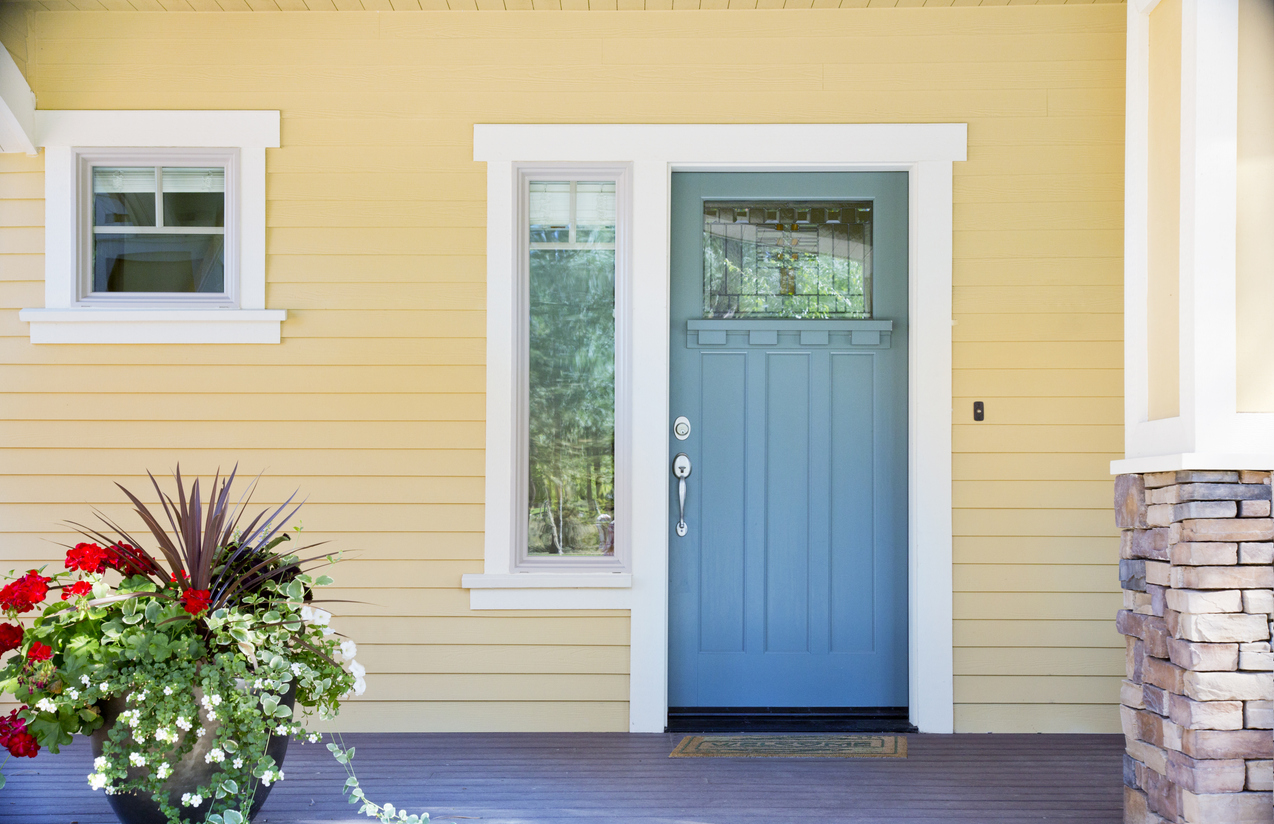
What is the seal on the bottom of an exterior door called?
The simplest way to seal that gap is with what is called a door sweep. A door sweep is a long strip of metal that holds a seal made of a material such as neoprene, silicone, or a nylon brush. This long strip of metal is surface mounted to the bottom of the door.
Its primary purpose is to create a barrier between the interior of the building and the outside environment, helping to prevent drafts, air leakage, water infiltration, insects, and debris from entering through the gap at the bottom of the door. Door sweeps come in various designs to accommodate different door types and sizes.
Installing a door sweep is a simple yet effective way to enhance energy efficiency, maintain indoor comfort, and protect your home from external elements. It is particularly beneficial during colder months to prevent heat loss and during wet seasons to keep moisture at bay. Additionally, door sweeps contribute to reducing noise infiltration and improving the overall insulation of your home.
A door sweep serves as a practical solution to minimize air and moisture intrusion under an exterior door, ultimately contributing to energy savings, comfort, and the overall well-being of your living space.
How do you finish an exterior door?
Clean the door of dust before applying the next coat.
Finishing an exterior door involves a series of deliberate steps aimed at safeguarding, enhancing, and preserving the door’s functionality and appearance. The process begins by ensuring the door’s surface is clean and smooth, allowing for a proper application of the chosen finish.
For wooden doors, priming may be necessary to create an optimal base for paint or stain to adhere to. Applying the chosen finish follows, with thin and even coats brushed or sprayed onto the door’s surface. It’s important to cover all edges, corners, and even the top and bottom of the door to effectively seal it against potential moisture intrusion. Multiple coats may be needed, with thorough drying between applications, ensuring a robust and lasting finish.
Once the finish is dry, the door’s hardware can be reinstalled, seamlessly merging functionality with aesthetics. As time passes, regular maintenance becomes crucial – periodic inspections to identify wear or damage and subsequent touch-ups serve to prolong the door’s protection and visual appeal.
In essence, finishing an exterior door is a careful and thoughtful process, a fusion of practicality and design. It not only shields the door from the rigors of weather but also elevates the door’s presence as a part of the home’s exterior, culminating in a harmonious balance of durability and aesthetics.
How can I seal an exterior door frame effectively?
Effectively sealing an exterior door frame is a critical step in maintaining your home’s comfort and energy efficiency. To achieve a successful seal, the process begins with a thorough inspection of the door frame for any existing gaps or deteriorated sealant. Clearing away debris and remnants of old sealant establishes a clean surface ready for treatment.
Choosing an appropriate sealant is paramount. Opt for a high-quality, exterior-grade sealant, such as silicone or polyurethane, known for their resilience against varying weather conditions. Once prepared, ensuring the door frame is clean and dry is essential for optimal adhesion.
The final touch involves shaping and smoothing the sealant for a clean and neat appearance. In essence, an effectively sealed exterior door frame is a testament to the meticulous care and attention to detail that can significantly contribute to your home’s overall comfort and energy efficiency.
What materials do I need to seal an exterior door frame?
How To Seal An Exterior Door Frame To effectively seal an exterior door frame, gathering the right materials is crucial to ensure a thorough and enduring result. The primary material, an exterior-grade sealant, takes center stage. Their durable nature ensures a reliable and long-lasting seal.
Equally important is the caulking gun, which facilitates the precise application of the sealant. This tool allows you to dispense the sealant consistently along the gaps of the door frame, promoting a uniform seal.
To maintain a tidy application, masking tape is an essential component. By strategically placing masking tape along the edges of the door frame, you prevent excess sealant from spreading onto the surrounding areas, resulting in a cleaner finish.
Achieving a polished appearance requires a caulking smoothing tool or a gloved finger. These tools help you shape and smooth the applied sealant, ensuring a neat and professional outcome.
Before applying the sealant, preparing the door frame is vital. Having a cleaner or rubbing alcohol on hand enables you to eliminate dust, grease, and moisture, establishing an ideal surface for the sealant to adhere to.
Why is weatherstripping important when sealing an exterior door frame?
Weatherstripping plays a pivotal role in the process of sealing an exterior door frame, offering a multifaceted solution to several critical concerns. Its significance lies in its ability to create a tight and effective barrier against external elements.
First and foremost, weatherstripping serves as a defense against drafts and air leaks. Secondly, weatherstripping prevents moisture intrusion. Weatherstripping creates a moisture-resistant seal, safeguarding your home’s integrity.
Furthermore, weatherstripping contributes to sound insulation. It acts as a buffer against outside noise, enhancing indoor comfort and tranquility.
Lastly, weatherstripping aids in pest control. Small insects and pests often find their way into homes through gaps around doors. Weatherstripping effectively seals these entry points, helping to keep unwanted visitors at bay. In essence, weatherstripping is crucial for achieving a comprehensive and effective seal around an exterior door frame.
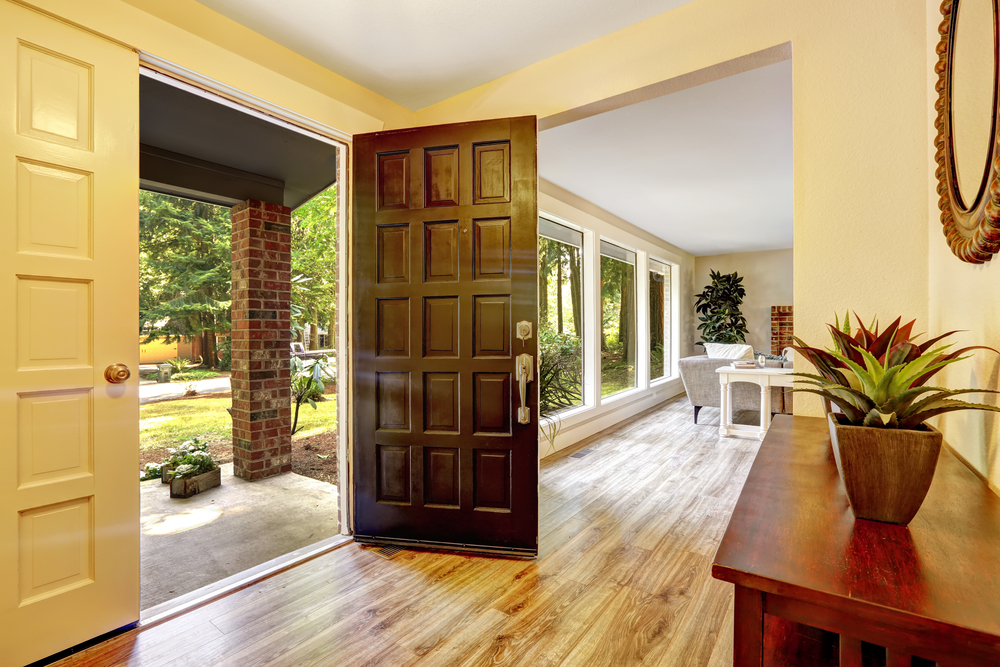
Conclusion
Sealing an Exterior Door Frame Sealing an external door frame is both practical and a symbol of the homeowner’s commitment to protecting their home from nature. Technique, expertise, and intention mix seamlessly when sealing an outside door frame. As we conclude this exploration, we grasp the significance of a well-sealed exterior door frame. It encapsulates a safeguard against drafts that seek to invade the sanctum of comfort, a barrier that thwarts the advances of moisture intent on causing harm, and a guardian against the intrusion of pests.
Sealing an outside door frame shows the homeowner’s commitment to balancing the indoor sanctuary with the ever-changing outside. A combination of materials, skill, and intention creates a safe and warm space. Closed against the outside, the door gives a sense of accomplishment and reassurance that the dwelling is safe and secure.



